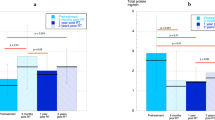Summary
The increasing knowledge of the structure and function of macromolecular carbohydrate-protein compounds (glycoproteins) has led to an increase in interest in these molecules in biology and especially in medicine in recent years. In saliva the largest part of the glycoproteins is constituted by the mucins. Salivary mucins exhibit very high molecular weight, have a high percentage of carbohydrate (approx. 70%) in the form of fucose, N-acetylglucosamine, N-acetylgalactosamine, galactose mannose and N-acetylneuraminic acid. They have a negative charge due to N-acetylneuraminic acid and sulphate residues, which together with the high molecular weight of these glycoproteins leads to characteristic viscous properties.
The most important mucin properties which play a role in the upper respiratory and alimentory tract will be presented, especially the viscous character with respect to lubricative functions, the protection of mucous surfaces against microorganisms and other agents.
A few physiological and pathological mucin analysis of human saliva and its method of analysis will be presented.
Similar content being viewed by others
Literatur
Bumm P, Berg M, Tiedtke M (1980) Speichelchemische Untersuchungen der Submandibularisdrüse bei Fazialisparesen. Arch Otorhinolaryngol 226: 269
Corfield AP, Ferreira Do Amaral C, Wember M, Schauer R (1976) The metabolism of O-Acyl-N-acylneuraminic acids — biosynthesis of O-acylated sialic acids in bovine and equine submandibular glands. Eur J Biochem 68: 597
Schauer R, Moczar E, Wember M (1979) The specificity of sialyltransferases using glycosylated lysozyme derivatives as substrates. Hoppe Seylers Z Physiol Chem 360: 1587
Author information
Authors and Affiliations
Additional information
Mit Hilfe der Deutschen Forschungsgemeinschaft
Rights and permissions
About this article
Cite this article
Schauer, R., Corfield, A. & Bumm, P. Zur biologischen Bedeutung und Bestimmung der Muzine im menschlichen Speichel. Arch Otorhinolaryngol 231, 843–845 (1981). https://doi.org/10.1007/BF00501773
Published:
Issue Date:
DOI: https://doi.org/10.1007/BF00501773




